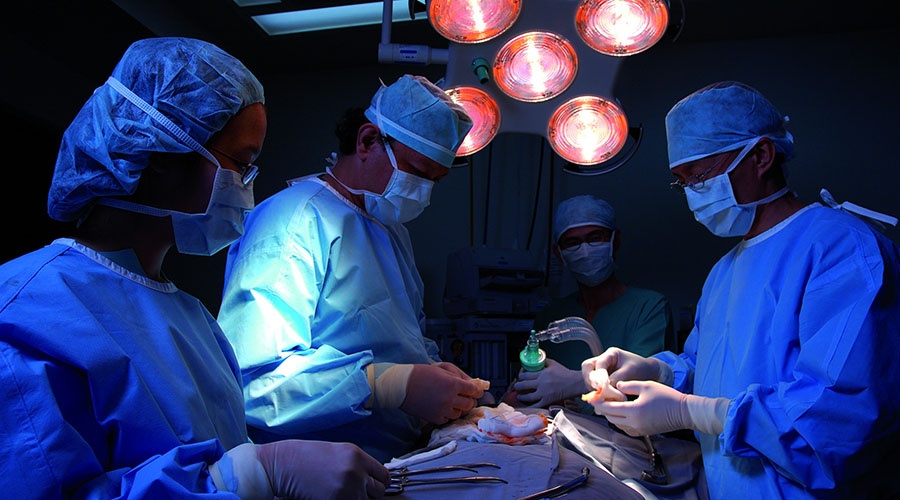Qidni Labs promises to clean out your kidney for an artificial one

End Stage Renal Disease (ESRD) is when kidneys have stopped working well enough for patients to survive without dialysis or a kidney transplant.
According to the latest US Renal Data System Annual Report, more than 660,000 Americans are being treated for kidney failure and 100,791 await kidney transplants.
Current treatments for ESRD are not only invasive, they are also distressing for the patient.
“The only option they have to survive during these years is dialysis,” said Iranian Morteza Ahmadi, the cofounder and CEO of Qidni Labs. “Seeing as the median wait time for an individual’s first kidney transplant is 3.6 years, there is a real need for a viable and efficient renal replacement therapy.”
Qidni Labs is trying to fill the gap by developing an implantable, artificial kidney that would offer patients a better quality of life.
Before launching the Canada-based startup, Ahmadi completed a fellowship with the Kidney Research Scientist Core Education and National Training Program (KRESCENT) at the Kidney Foundation in Canada. He holds a PhD in Systems Design Engineering from the University of Waterloo and studied physics in Mashhad, Iran, where he grew up.
Ahmadi combined his engineering skills with his medical knowledge to launch Qidni Labs in 2014 with cofounder Elham Shahi.

What’s out there?
Currently, patients with ESRD have to visit dialysis clinics three times a week to endure four hour sessions of dialysis each time. This results in physical and emotional pain.
Furthermore, the cost of dialysis per patient is estimated at $90,000 a year. The National Kidney Foundation reports that in 2012, US social insurance program Medicare paid more than $87 billion in caring for kidney disease patients, excluding the cost of prescription medications.
Qidni Lab’s business model aims to reduce the costs by selling the device to hospitals for $100,000 with a 65 percent profit margin. Health insurance companies would then reimburse the hospital $200,000 (cost of surgery and care, plus cost of device) and patients would receive the device for free.
The device
Ahmadi’s team is currently developing a hemo-compatible (compatible with the blood) product that mimics the filtration properties of kidneys. They have filed three patents in the US and own 100 percent of the intellectual property rights, which cover the manufacturing process of implantable nano filters and an implantable renal replacement therapy.
But building the right device was a challenge. “We tried and failed more than once,” said Ahmadi. “We had to go through several stages of prototype testing.”
The device is connected to the iliac artery, which supplies blood to the pelvic region and legs, and to the iliac vein, which circles the blood back upwards. The blood is diverted from the artery into a nano-filtration system, which removes fluids and uremic toxins from the blood.
In a healthy person, uremic toxins are evacuated through urine, via a functioning kidney. But in the case of ESRD patients, the toxins accumulate and impact negatively on biological functions in the body. The device helps to filter these toxins and pushes the healthy blood back upwards through the vein.
“The nano filters function on normal blood pressure, so as long as the heart is beating, the device works,” said Ahmadi.

The artificial kidney keeps toxins at a normal level by providing treatment continuously and automatically, potentially removing the need for dialysis treatment and reducing hospital visits drastically, as the patient received 24/7 treatment at home.
“All the data points to the fact that if you do dialysis at home, you have a better quality of life and live longer,” said Professor Vito Campese, chief of the division of nephrology and hypertension at the University of Southern California.
What’s on the market?
Given the high demand for better kidney failure treatments, other devices are currently being tested.
“We now see improvements in wearable and portable kidney devices,” said Campese, who is on the board of advisors at EasyDial, a portable hemodialysis machine designed to be operated by the patient, although not yet approved for use.
There are also other attempts at developing an implantable kidney. The Vanderbilt University Medical Center and University of California San Francisco (UCSF) are collaborating to develop an implantable artificial kidney with microchip filters and living kidney cells that are powered by the patient’s heart. The aim is also to keep patients off dialysis.
Ahmadi and his team’s technique differs in that their device is mechanical and does not use living kidney cells. They just completed two tests in pigs which, according to Ahmadi, were very promising as “the device successfully removed water and uremic toxins”.
Accelerating and funding
The Qidni team recently participated in the IndieBio program, an accelerator for biotech startups based in San Francisco. They received $250,000 in seed funding to develop their product, attended mentoring sessions from industry professionals and pitched at the Demo Day in June to several Silicon Valley investors.
They are now seeking a $2 million in investment to pursue clinical trials and make the technology less medically risky to implant in patients.
“An implantable kidney would be an appealing solution,” said Campese. “But it’s tricky as the risks of infection and clotting are very real."
The Qidni team hopes to bring the device to market in six years, until which they will continue animal testing and ultimately test on humans by first connecting the device outside of the body.


